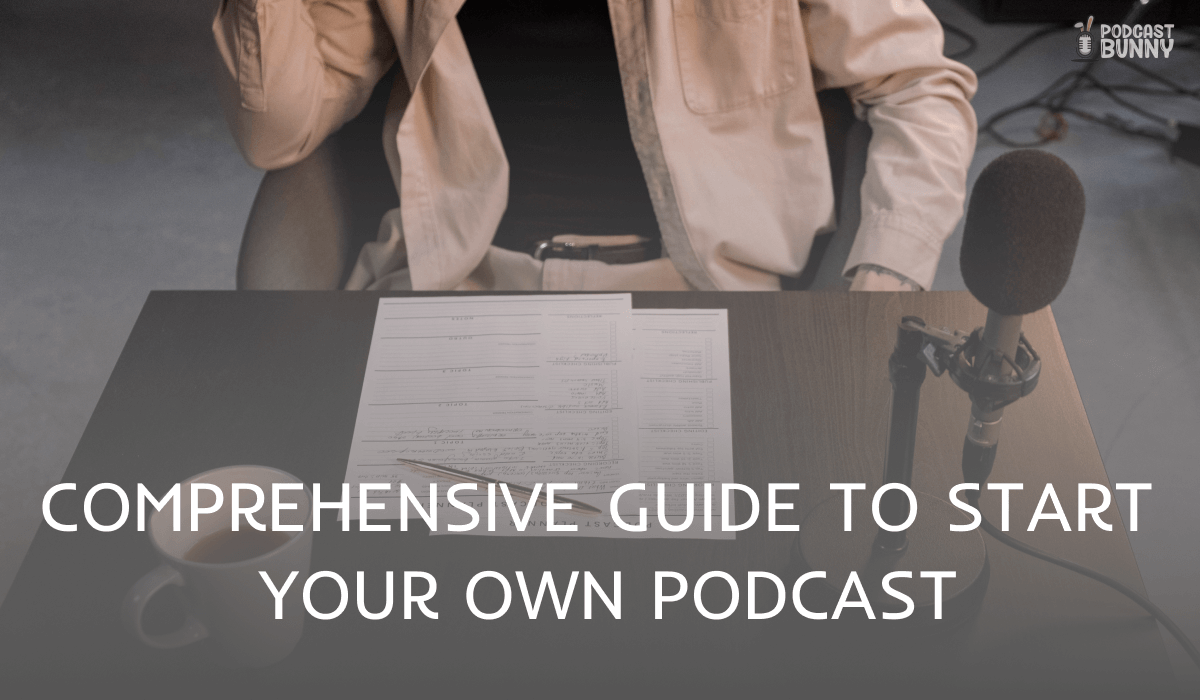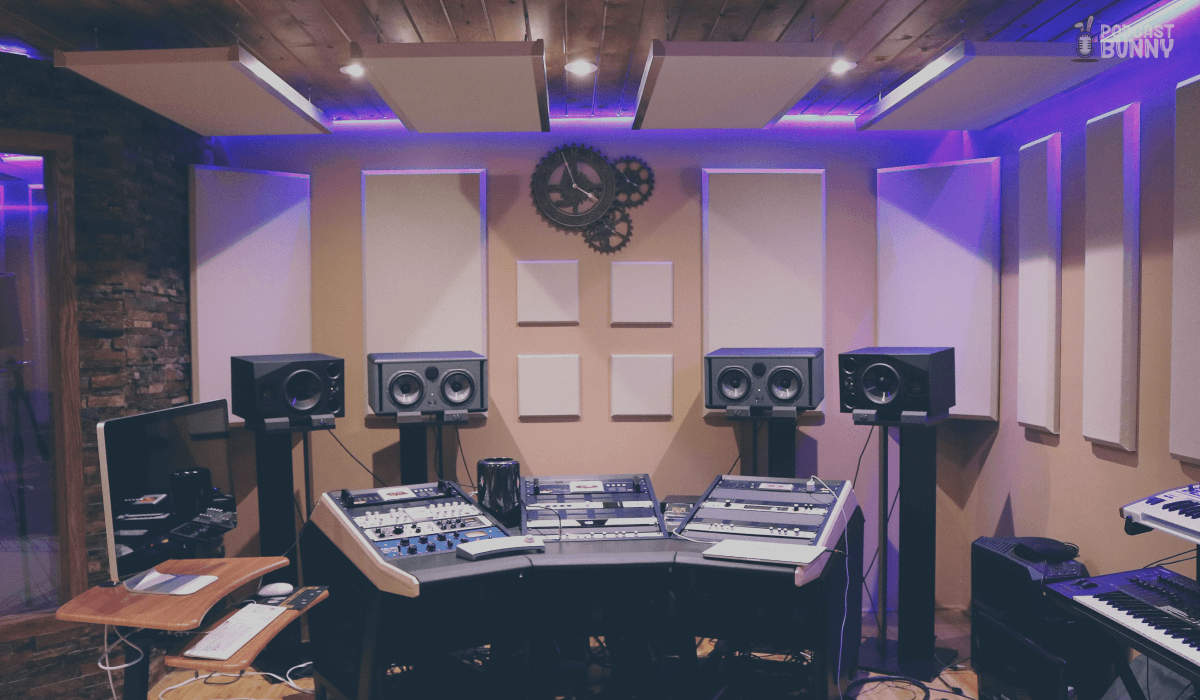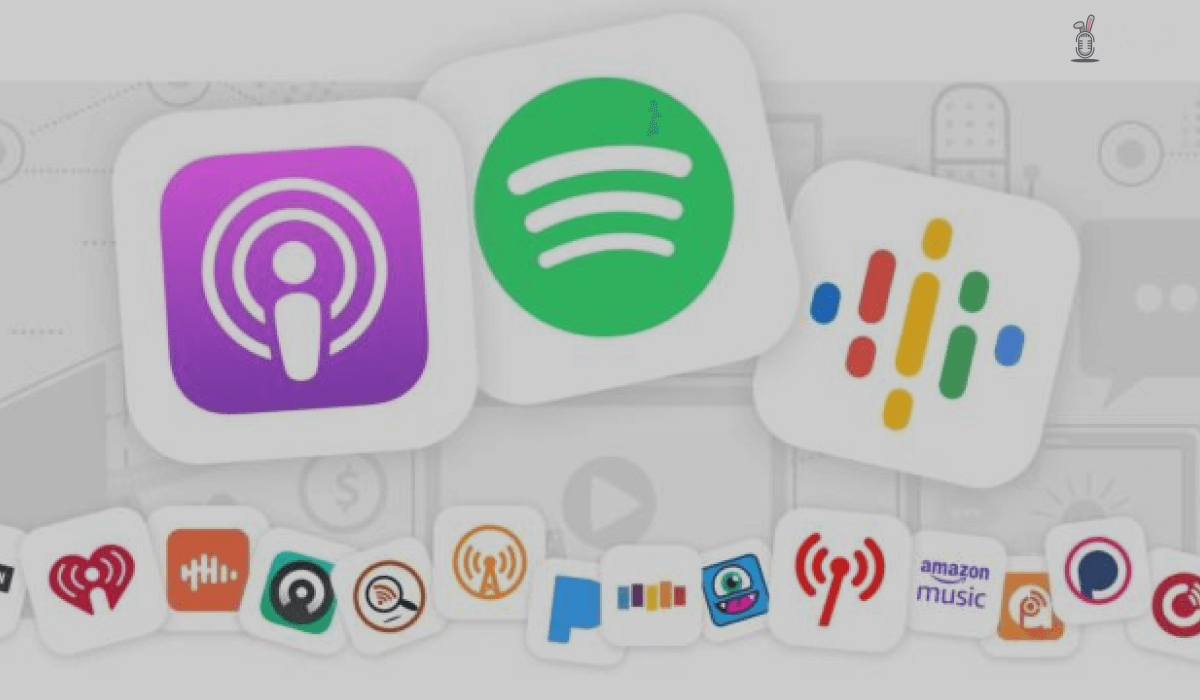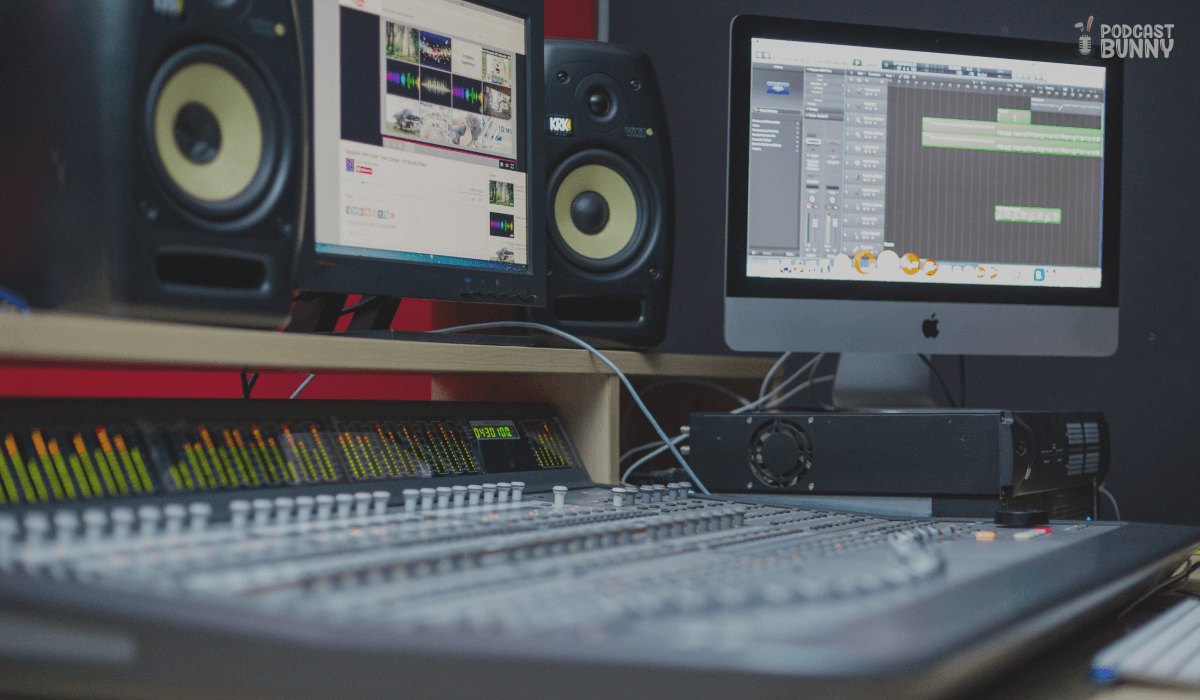
Over the past few years, there has been a remarkable upswing in the popularity of podcasts, emerging as a riveting platform for narratives, the exchange of knowledge, and amusement. Whether you’re deeply enthusiastic about a particular subject, aiming to forge connections with kindred spirits, or aspiring to expand your brand’s influence, embarking on your own podcasting journey can prove to be an invigorating and gratifying pursuit. Within the confines of this all-encompassing manual, we will guide you through the indispensable measures required to effectively initiate your podcast.
It’s paramount to recognize that the forthcoming points constitute the bedrock essentials for successfully launching your very own podcast. These fundamental guidelines serve as the cornerstone of your podcasting journey, offering invaluable insights and practical steps that are pivotal to your podcast’s inception and growth.

1. Define Your Podcast Concept:
At the heart of every captivating podcast lies a well-defined concept that serves as its guiding force. Your podcast concept is more than just a topic; it’s the unique blend of passion, purpose, and perspective that sets your show apart in the vast auditory landscape. This is where your journey begins – with a clear vision of what you want to share with the world and the impact you aim to create.
1. Unearth Your Passion:
Your podcast concept should align with your genuine interests and expertise. What subject matter ignites your curiosity and enthusiasm? Delve into your passions, whether it’s entrepreneurship, true crime, self-improvement, pop culture, or any other niche that speaks to you.
2. Define Your Niche:
While broad topics are appealing, niching down can give your podcast a unique edge. Consider the specific angle or subtopic within your broader interest that you can explore deeply. This not only helps you stand out but also attracts a more engaged and dedicated audience.
3. Know Your Audience:
To resonate with your listeners, you need to understand their needs and preferences. Who are they? What problems do they want solutions to? Tailor your podcast concept to cater to your target audience, ensuring you’re delivering content that’s valuable and relevant.
5. Set Clear Goals:
Establish both short-term and long-term goals for your podcast. Are you aiming to educate, entertain, inspire, or provoke thought? Outline what you want to achieve with each episode and over the course of your podcasting journey.
6. Research and Validate:
Before finalizing your podcast concept, research existing podcasts in your chosen niche. Identify gaps or areas where you can offer a unique perspective. Also, seek feedback from friends, peers, or potential listeners to validate the appeal of your concept.
7. Flexibility and Evolution:
While a well-defined concept is crucial, allow room for your podcast to evolve organically. As you learn and grow, your podcast may naturally shift direction or incorporate new elements. Embrace the journey of refinement and adaptation.
In the vast auditory realm, your podcast concept is your beacon of identity, guiding both you and your listeners on a journey of discovery. Take the time to nurture and refine your concept, for it’s the foundation upon which your podcasting adventure is built.

2. Plan and Structure:
In the dynamic world of podcasting, a well-thought-out plan and a structured approach are the secret ingredients that transform a mere collection of episodes into a compelling and engaging podcast series. As you embark on this creative voyage, meticulous planning and a coherent structure will not only keep your content on track but also resonate powerfully with your audience, leaving them eagerly awaiting each new episode.
1. Craft Your Podcast Outline:
Begin by outlining the overarching theme and purpose of your podcast. Define the main topics or segments you’ll cover in each episode. This outline acts as your roadmap, ensuring a cohesive flow throughout your podcast journey.
2. Episode Length and Frequency:
Decide on the ideal length for your episodes. Will they be bite-sized bursts of knowledge or in-depth explorations? Equally important is determining the frequency of your releases – whether it’s a weekly dose or a monthly deep dive.
3. Storyboarding Your Episodes:
Break down each episode into segments or chapters. Consider introducing segments like an engaging hook, the main content, guest interviews, listener questions, and a memorable outro. This segmented structure maintains a rhythm that keeps listeners engaged.
4. Script or Not to Script:
Depending on your style, you can choose to follow a script, use bullet points, or go completely ad-lib. Having a script can help maintain clarity, but don’t shy away from spontaneous moments that infuse authenticity into your podcast.
5. Consistency is Key:
Stick to your chosen format and structure. Consistency creates a sense of familiarity for your listeners, making it easier for them to connect with your content and anticipate what’s next.
6. Hooks and Cliffhangers:
Begin your episodes with a captivating hook that grabs listeners’ attention from the start. Consider ending episodes with intriguing cliffhangers or thought-provoking questions that encourage your audience to tune in to the next installment.
7. Transition Smoothly:
Seamless transitions between segments or topics are crucial for maintaining a coherent flow. Use brief music interludes or sound effects to signal transitions and keep the pacing engaging.
8. Time Management:
Allocate time for each segment within your episode to prevent overloading or underutilizing any part. Efficient time management ensures that your content remains focused and impactful.
9. Revise and Refine:
After recording, review and refine your episode structure. Trim any excess content, ensure a logical progression, and fine-tune transitions for a polished final product.
A podcast’s success lies not just in the content itself but in its thoughtful planning and meticulous structuring. This foundation enables you to deliver a consistent and engaging experience to your listeners, elevating your podcast from a mere collection of episodes to an immersive journey worth embarking upon. With a well-crafted plan and a carefully designed structure, you’re poised to create podcasting excellence that resonates with your audience and stands the test of time.

3. Choose a Captivating Name and Branding:
In the vast ocean of podcasts, your show’s name and branding serve as the North Star, guiding potential listeners to your unique corner of the auditory universe. Just as a captivating book cover entices readers, an intriguing podcast name and cohesive branding captivate and resonate with your target audience. This is your opportunity to make a memorable first impression and set the stage for an unforgettable podcasting journey.
1. Name Your Podcast:
The Art of Allure Selecting the perfect name for your podcast is both an art and a science. Your name should be concise, reflective of your podcast’s theme, and easy to remember. Brainstorm a variety of options, considering puns, alliteration, or evocative phrases that encapsulate your podcast’s essence.
2. Reflect Your Brand Identity:
Beyond Words Your podcast’s branding extends beyond its name. Craft a visual identity through captivating cover art that mirrors your podcast’s tone and content. Leverage color palettes, typography, and imagery that resonate with your target audience, offering them a glimpse into the world they’re about to explore.
3. Consistency Across Platforms:
A Unified Presence Ensure your podcast name and branding are consistent across all platforms – from podcast directories to social media. This uniformity builds a strong brand presence and makes it easier for potential listeners to discover and engage with your content.
4. Engage Emotions:
Evoke Curiosity and Connection A captivating name and branding should evoke emotions and curiosity. Think about the feelings you want your podcast to evoke in listeners. Whether it’s excitement, nostalgia, or thoughtfulness, your branding should ignite a connection.
5. Test and Iterate:
The Listener Litmus Test Before finalizing your podcast’s name and branding, run it by a group of friends, peers, or potential listeners. Their feedback can provide valuable insights into how your chosen elements resonate with your intended audience.
6. SEO-Friendly:
Discoverability Matters While creativity is key, consider incorporating relevant keywords in your podcast name to enhance discoverability on search engines and podcast directories. Striking a balance between creativity and SEO can help potential listeners find your show more easily.
7. Longevity and Versatility:
A Brand for Tomorrow When crafting your podcast’s name and branding, think long-term. Will your chosen elements remain relevant and adaptable as your podcast evolves? A timeless approach ensures that your brand continues to resonate as your podcast grows.
8. Storytelling Through Branding:
Your Narrative Your podcast’s name and branding should tell a story – your story. Infuse elements of your personality, values, and podcast’s purpose into your branding. This narrative connection draws listeners in and fosters a deeper sense of engagement.
9. Professionalism and Credibility:
The Trust Factor A well-chosen name and cohesive branding lend an air of professionalism and credibility to your podcast. It communicates that you’ve invested time and thought into creating a high-quality listening experience.
In the realm of podcasting, your show’s name and branding serve as the threshold to an auditory adventure. A captivating name and thoughtfully designed branding not only attract listeners but also invite them to embark on a journey of discovery and connection. With meticulous consideration and a dash of creativity, you’re poised to create a podcast identity that leaves a lasting imprint on your audience’s hearts and minds.

4. Acquire Necessary Equipment:
In the realm of podcasting, where sound is your canvas and narrative your brush, the quality of your equipment can make all the difference between a lackluster listening experience and an audio masterpiece. Acquiring the necessary equipment is your first step toward ensuring that your podcast is not only heard but embraced, leaving your audience eagerly awaiting each new episode. Let’s dive into the essential tools that will help you craft a sonic journey worth tuning in for.
1. Invest in a Quality Microphone:
The cornerstone of impeccable sound quality is a good microphone. Opt for a microphone that suits your recording environment and budget. Dynamic microphones are ideal for reducing background noise, while condenser microphones capture the nuances of your voice.
2. Headphones for Precision:
A pair of high-quality headphones is your window into the world of sound you’re creating. Closed-back headphones minimize sound leakage and provide accurate monitoring during recording and editing.
3. Pop Filters and Windshields:
These simple yet effective accessories prevent plosive sounds (like “p” and “b” sounds) from distorting your recordings. Windshields are essential if you’re recording outdoors or in a space with airflow.
4. Stable Microphone Stand:
A sturdy microphone stand not only keeps your microphone secure but also prevents handling noise that can be picked up during recording.
5. Acoustic Treatment:
Transform your recording space with acoustic treatment. Absorption panels, bass traps, and diffusers help control echo, reverb, and other unwanted audio reflections.
6. Audio Interface:
If you’re using an XLR microphone, an audio interface is essential. It converts analog signals from your microphone into digital signals for your computer, ensuring clean and high-quality recordings.
7. Digital Audio Workstation (DAW):
Choose a DAW that suits your needs and level of expertise. Popular options include Audacity (free), Adobe Audition, GarageBand (Mac), and Reaper.
8. Soundproof Your Space:
While not always feasible, creating a quiet recording environment is crucial. Minimize external noise by closing windows, using soundproofing materials, and recording during quieter times of the day.
9. Portable Recorder:
If you’re conducting interviews or recording on-the-go, a portable recorder can be a valuable asset. Look for one with good battery life and high-quality recording capabilities.
10. Cables and Accessories:
Ensure you have the necessary cables to connect your microphone and headphones to your recording setup. Additionally, consider accessories like a shock mount to further reduce handling noise.
11. Audio Editing Software:
A robust audio editing software allows you to fine-tune your recordings, remove background noise, add effects, and create a polished final product.
12. Test and Calibrate:
Once you’ve acquired your equipment, thoroughly test and calibrate it to achieve optimal sound quality. Adjust microphone placement, levels, and settings to ensure clear and balanced recordings.
Remember, your equipment is the conduit through which your creativity and voice flow. Investing in high-quality tools not only enhances your podcast’s sound but also demonstrates your commitment to delivering an exceptional listening experience. With the right equipment in your arsenal, you’re well on your way to producing a podcast that resonates with your audience and stands out in the competitive podcasting landscape.

5. Set Up Your Recording Space:
In the realm of podcasting, where every word spoken and every sound captured becomes a brushstroke on your auditory canvas, the significance of your recording environment cannot be overstated. The ambiance of your recording space can make or break the quality of your podcast episodes, transforming them from mere recordings to immersive sonic experiences that captivate your audience. Let’s delve into the art of creating a recording space that ensures crystal-clear audio and a distraction-free recording atmosphere.
1. Choose the Ideal Location:
Select a quiet, controlled environment for your recording space. Ideally, this should be a room with minimal external noise, such as traffic or appliances, and ample space for your recording setup.
2. Acoustic Treatment:
Consider implementing acoustic treatment to minimize unwanted echoes and reverberations. Acoustic panels, bass traps, and diffusers can help create a controlled and balanced sound environment.
3. Soundproofing Measures:
While complete soundproofing might not be feasible for everyone, take steps to reduce external noise. Close windows and doors, use heavy curtains, and seal any gaps that may let in noise.
3. Soundproofing Measures:
While complete soundproofing might not be feasible for everyone, take steps to reduce external noise. Close windows and doors, use heavy curtains, and seal any gaps that may let in noise.
4. Choose Soft Surfaces:
Soft surfaces, like carpets and rugs, help absorb sound and prevent audio reflections. If your recording space has hardwood or tile flooring, consider adding rugs to dampen sound.
5. Microphone Placement:
Experiment with microphone placement to find the optimal position for recording. Avoid placing your microphone directly against hard surfaces to prevent audio reflections.
6. Isolation Shield:
If your recording environment isn’t acoustically treated, consider using an isolation shield around your microphone. This helps reduce reflections and isolates the microphone from external noise.
7. Furniture Arrangement:
Arrange your furniture to create an ergonomic and efficient recording setup. Ensure your microphone, headphones, and any other equipment are within easy reach.
8. Natural Lighting:
If possible, utilize natural lighting to create a pleasant and inviting recording space. Position your recording setup in windows to benefit from soft, diffused light.
9. Test and Adjust:
Before recording your episodes, conduct test recordings and listen for any unwanted noise, echoes, or distortions. Make necessary adjustments to your setup and environment to achieve the best sound quality.
10. Background Noise Management:
While recording, ensure that potential sources of background noise are minimized. Turn off fans, air conditioners, and appliances that could create unwanted sounds.
11. Time Your Recordings:
Choose recording times when external noise is minimal. Early mornings or late evenings are often quieter periods when ambient noise is reduced.
12. Portable Options:
If you’re unable to create a permanent recording space, consider using portable solutions like vocal booths or mobile recording setups for on-the-go podcasting.
13. Headphone Monitoring:
Use headphones during recording to monitor your audio in real-time. This helps you catch any issues and make adjustments as needed.
Creating an ideal recording space requires careful consideration and a touch of creativity. With the right setup, you can ensure that your podcast episodes are delivered with clarity, depth, and a professional touch that resonates with your audience. Your recording space is the cocoon where your podcasting dreams take flight – nurture it, refine it, and watch your audio aspirations soar to new heights.

6. Select Podcast Hosting:
Congratulations! Your podcast is taking shape, and now it’s time to find it a digital abode. Podcast hosting is the virtual stage where your episodes will reside, waiting to be discovered by eager listeners. Making the right hosting choice ensures your content is delivered seamlessly to platforms like Apple Podcasts, Spotify, and beyond. Let’s embark on a journey to explore the realm of podcast hosting and uncover the perfect home for your show.
1. Hosting Platform Options:
Numerous podcast hosting platforms cater to various needs and budgets. Consider options like Libsyn, Podbean, Buzzsprout, Anchor, and Transistor, each offering unique features and pricing structures. You can find more by simply searching on Google and selecting one of your choice.
2. Storage and Bandwidth:
Assess your podcast’s storage and bandwidth requirements. Choose a hosting plan that provides ample space for your episodes and accommodates potential spikes in listener traffic.
3. Reliable Distribution:
Your chosen hosting platform should effortlessly distribute your episodes to major podcast directories. Ensure compatibility with platforms like Apple Podcasts, Spotify, Google Podcasts, and more.
4. Easy Episode Management:
A user-friendly interface for uploading, scheduling, and managing episodes is essential. Look for a platform that simplifies the process of publishing and organizing your content.
5. Analytics and Insights:
Gain insights into your podcast’s performance through analytics. Metrics like listener demographics, episode downloads, and engagement can guide your content strategy.
6. Customization and Branding:
Personalize your podcast’s landing page with cover art, episode descriptions, and show notes. A cohesive branding experience enhances your podcast’s professionalism.
7. Monetization Opportunities:
If you plan to monetize your podcast through sponsorships or listener support, explore hosting platforms that offer built-in monetization tools or integrations.
8. Support and Resources:
Reliable customer support and educational resources can be invaluable, especially if you’re new to podcasting. Look for platforms that offer responsive assistance and helpful guides.
8. Support and Resources:
Reliable customer support and educational resources can be invaluable, especially if you’re new to podcasting. Look for platforms that offer responsive assistance and helpful guides.
9. Cost Considerations:
While many hosting platforms offer free plans, consider the features and limitations of each. Paid plans often provide more storage, bandwidth, and advanced features.
10. Scalability:
Choose a hosting platform that can accommodate your podcast’s growth. As your audience expands, you want a hosting solution that can handle increased demand.
11. Migration Options:
If you’re transferring your podcast from one hosting platform to another, check if your chosen platform offers migration assistance or tools to simplify the process.
12. Terms and Ownership:
Review the hosting platform’s terms of service, especially concerning ownership of your content and any potential limitations on distributing your podcast elsewhere.
13. Trial Period:
Many hosting platforms offer trial periods. Take advantage of these to test the platform’s features, interface, and overall suitability for your podcast.
14. Back-Up and Security:
Ensure your podcast’s content is secure and backed up regularly. Look for hosting platforms that prioritize data protection and provide backup options.
Your choice of podcast hosting is pivotal in shaping your show’s online presence. With thorough research and careful consideration of your podcast’s unique needs, you can find the ideal hosting platform that not only showcases your content but also lays the foundation for your podcast’s digital journey. As you venture forth, remember that your hosting platform is the bridge connecting your creativity to the ears of your listeners – make it a bridge that’s reliable, accessible, and inviting.

7. Create Compelling Content:
The heart and soul of your podcast lies in the content you create – the stories you tell, the knowledge you share, and the connections you forge with your audience. Crafting compelling content is an art that involves a delicate interplay of creativity, storytelling prowess, and a deep understanding of your listeners’ desires. As you embark on this exciting journey of content creation, let’s delve into the elements that will transform your podcast episodes into captivating experiences that leave a lasting impact.
1. Topic Selection and Research:
Choose topics that resonate with your audience and align with your podcast’s niche. Thoroughly research each subject to ensure your content is accurate, insightful, and valuable.
2. Episode Structure:
Organize your episodes with a clear and engaging structure. Introduce the topic, delve into the main content, and conclude with a thought-provoking takeaway or call to action.
3. Storytelling Mastery:
Weave narratives that engage, inspire, and resonate with your listeners. Incorporate personal anecdotes, case studies, and relatable experiences to humanize your content.
4. Guest Selection and Interviews:
If your podcast features guests, carefully choose individuals who bring unique perspectives and insights. Conduct well-prepared interviews that allow their expertise to shine.
5. Scripting or Outline:
Decide whether you’ll follow a script, detailed outline, or more spontaneous approach. Striking the right balance between structure and authenticity is key.
6. Engaging Introductions:
Capture your audience’s attention right from the start. Begin with an intriguing hook, an anecdote, or a thought-provoking question that entices listeners to keep listening.
7. Diverse Content Formats:
Experiment with different content formats, such as solo episodes, interviews, panel discussions, Q&A sessions, or storytelling episodes. Diversity keeps your content fresh and engaging.
8. Clear and Concise Communication:
Keep your content focused and concise. Avoid rambling or going off-topic, ensuring that your audience gains valuable insights without getting lost.
9. Visual and Auditory Elements:
Incorporate visual aids or sound effects to enhance your storytelling. Thoughtfully chosen visuals or sound cues can add depth and engagement to your episodes.
10. Relatability and Connection:
Speak to your audience’s pain points, aspirations, and emotions. Build a connection by addressing their needs and providing solutions.
11. Transitions and Pacing:
Ensure smooth transitions between different segments or topics. Maintain a steady pace that keeps your audience engaged without overwhelming them.
12. Calls to Action:
Encourage listener engagement by including clear calls to action. Whether it’s subscribing, leaving reviews, or participating in discussions, guide your audience on their next steps.
13. Editing Excellence:
Edit your episodes diligently to remove any errors, awkward pauses, or unnecessary content. A polished final product demonstrates professionalism and respect for your audience’s time.
14. Authenticity Above All:
Be true to your voice and style. Authenticity fosters a genuine connection with your audience and distinguishes your podcast from others.
Creating compelling podcast content is an ongoing process that requires dedication, creativity, and a commitment to continuous improvement. With each episode, you have the opportunity to inspire, educate, and entertain your listeners, forging a bond that transcends the digital airwaves. As you harness the power of your words and stories, remember that your content has the potential to not only captivate but also transform lives and leave an indelible mark on the hearts and minds of your audience.

8. Be Authentic and Engaging:
In a world inundated with content, authenticity stands out like a beacon, drawing listeners in and creating genuine connections. Your podcast is your canvas, and your authenticity is the vibrant paint that brings your episodes to life. Being authentic isn’t just about sharing your thoughts; it’s about creating a space where your audience can relate, resonate, and engage with the real you. Let’s explore how you can infuse your podcast with authenticity and captivate your audience with engaging storytelling.
1. Embrace Your Unique Voice:
Your voice is a fingerprint that sets you apart. Embrace your natural way of speaking, quirks, and idiosyncrasies. Authenticity shines when you’re true to who you are.
2. Share Personal Stories:
Open up about your experiences, challenges, and triumphs. Personal stories create relatable moments that resonate deeply with your audience and build a sense of camaraderie.
3. Vulnerability and Honesty:
Being authentic means showing vulnerability and being honest about your feelings and thoughts. When you’re real and open, your audience is more likely to connect on an emotional level.
4. Connect on a Human Level:
Address your listeners as individuals, not just an audience. Use inclusive language, engage in conversations, and invite them to be part of your podcast journey.
5. Active Listening:
Pay attention to listener feedback and engage with your audience on social media or through email. Acknowledge their thoughts, answer questions, and incorporate their suggestions into your content.
6. Storytelling That Resonates:
Craft stories that tap into universal themes and emotions. Sharing anecdotes and narratives that evoke empathy and understanding helps build a strong connection.
7. Real Conversations:
Whether you’re podcasting solo or hosting guests, engage in authentic conversations. Let discussions flow naturally, delve into unscripted moments, and allow for genuine interactions.
8. Address Challenges:
Don’t shy away from addressing difficult or controversial topics. Your authenticity shines when you confront challenges head-on, fostering meaningful discussions.
9. Passion and Enthusiasm:
Infuse your podcast with genuine passion and enthusiasm for your topic. Your energy is contagious and keeps your audience engaged and excited.
10. Engage with Audience Stories:
Share listener stories or feedback within your episodes. Highlighting your audience’s experiences shows that you value their contributions and encourages further engagement.
11. Reflect and Evolve:
Authenticity doesn’t mean stagnation. Reflect on your content, evaluate listener responses, and evolve as a podcaster while staying true to your core values.
12. Stay Present and Responsive:
During recordings, focus on the moment and engage actively with your content. A genuine presence translates into captivating episodes.
13. Be Mindful of Overproduction:
While polishing your episodes is important, don’t over-produce to the point of losing authenticity. Embrace imperfections and moments of spontaneity.
14. Inspire and Empower:
Authenticity is a powerful tool to inspire and empower your audience. Share lessons you’ve learned, encourage growth, and motivate your listeners to take action.
Being authentic and engaging isn’t a formula; it’s a mindset. It’s about showing up as your true self, connecting with your audience on a human level, and inviting them into an authentic conversation. As you create episodes infused with your unique essence, remember that authenticity is a gift you offer to your listeners – a gift that fosters trust, loyalty, and a genuine sense of belonging.

9. Edit and Polish Your Episodes:
Editing is where the raw magic of your podcast transforms into a polished masterpiece. Just as a sculptor meticulously refines every curve, and a painter adds the final strokes to a canvas, editing and polishing your episodes elevates your content from good to exceptional. This process isn’t just about removing mistakes; it’s about enhancing the listening experience, ensuring clarity, and delivering a professional-quality show that captivates your audience. Let’s explore the art of editing and discover how to make your podcast shine.
1. Comprehensive Listening:
Listen to your recording from start to finish before making any edits. This helps you understand the flow of the episode and identify areas that need improvement.
2. Remove Unwanted Noise:
Edit out background noise, ums, ahs, long pauses, and any other distractions that could deter from your message. A clean audio canvas ensures focused engagement.
3. Maintain Natural Flow:
While editing, preserve the natural rhythm of conversations and monologues. Avoid over-editing that could make your podcast feel overly scripted or robotic.
4. Tighten Pacing:
Trim excessive pauses or repetitions that may slow down the pacing. A well-paced episode keeps listeners engaged and maintains a dynamic energy.
5. Enhance Audio Quality:
Use noise reduction, EQ, and compression tools to enhance audio clarity and balance. Smooth out any drastic volume variations between different segments.
6. Add Intro and Outro:
Incorporate a professionally recorded intro and outro to give your podcast a polished and consistent identity. Music or sound effects can also add a professional touch.
7. Smooth Transitions:
Ensure seamless transitions between segments, interviews, or topics. Use crossfades or music interludes to create a fluid listening experience.
8. Content Cohesion:
Edit for content cohesion and relevance. Make sure your episode follows a logical progression and stays true to your podcast’s theme.
9. Fact-Checking:
Verify any facts, statistics, or information shared in your episode. Accuracy adds credibility and ensures your listeners trust your content.
10. Attention to Detail:
Pay attention to details like proper pronunciation, grammar, and word choice. A polished script enhances your professionalism and clarity.
11. Quality Control:
Listen to the edited episode multiple times to catch any missed errors or inconsistencies. Consider enlisting a second pair of ears for a fresh perspective.
12. Time Management:
Keep an eye on the episode’s length. While longer episodes have their place, strive to maintain a balance that respects your audience’s time and attention.
13. Listener-Friendly Delivery:
Edit in a way that respects your listeners’ preferences. Avoid excessive repetition or tangents that could disengage your audience.
14. Beta Testing:
Before publishing, share the edited episode with a small group of trusted listeners for feedback. This final quality check ensures a flawless release.
15. Embrace Imperfections:
While polishing is crucial, don’t obsess over perfection to the point of stifling authenticity. A few genuine imperfections can humanize your podcast.
Editing and polishing your episodes is a labor of love that transforms your content into a finely crafted work of art. As you meticulously refine each episode, remember that editing isn’t just about erasing mistakes; it’s about enhancing your podcast’s essence, ensuring a captivating journey for your listeners, and leaving them eagerly anticipating your next masterpiece.

10. Add Intro and Outro Music
Music has a unique power to set the tone, evoke emotions, and create a memorable atmosphere. Just as a skilled composer carefully selects notes to craft a symphony, incorporating intro and outro music into your podcast enhances its identity and leaves a lasting impression on your listeners. These musical bookends not only provide a polished touch but also guide your audience into your podcast’s world and bid them farewell with a sense of satisfaction. Let’s explore the art of adding intro and outro music to your podcast episodes.
1. Choosing the Right Music:
Setting the Mood Select music that aligns with your podcast’s theme, tone, and content. Consider the emotions you want to evoke – whether it’s excitement, introspection, or relaxation. Royalty-free music libraries offer a wide variety of tracks to suit your needs.
2. Reflecting Your Brand:
Sonic Identity Your intro and outro music contribute to your podcast’s branding. If you have a signature sound or jingle, consider incorporating it into your musical elements. Consistency across episodes reinforces your podcast’s identity.
3. Length and Composition:
Striking the Balance Keep your intro and outro music relatively short – around 10 to 20 seconds is often ideal. Craft these musical segments with a gradual build-up or a gentle fade-out to create a smooth transition into and out of your content.
4. Customization and Originality:
Tailored Experience Consider composing or commissioning original music that’s uniquely tailored to your podcast. Original compositions can create a distinctive sonic experience that sets your show apart.
5. Introducing Your Podcast:
The Intro Design an intro that grabs your listeners’ attention and introduces your podcast’s theme. Include a brief voiceover that states the podcast’s name, your name, and perhaps a catchy tagline or episode number.
6. Call to Action and Contact Information:
Utilize the Outro The outro is an opportunity to wrap up your episode and guide your audience to take action. Encourage them to subscribe, leave reviews, visit your website, or engage on social media. Include your podcast’s website or contact information.
7. Music Volume and Mixing:
Balancing Act Ensure your intro and outro music doesn’t overpower your voice or content. Adjust the volume of the music so that it complements your speech without drowning it out.
8. Seamless Transitions:
Graceful Flow Blend the intro music with your voiceover smoothly. Avoid abrupt cuts that could jar your listeners. Similarly, let the outro music gently fade out as you conclude your episode.
9. Copyright Considerations:
Royalty-Free or Licensed Music When using music, ensure you have the necessary rights to use it. Choose royalty-free music from reputable sources, or purchase licenses for commercial music if needed.
10. Editing and Final Touches:
Sonic Finishing During the editing process, precisely align your voiceover with the intro and outro music. Edit out any unnecessary pauses or interruptions for a seamless integration.
11. Listener Feedback:
A Guiding Melody Pay attention to listener feedback regarding your intro and outro music. Their opinions can help you refine your choices and ensure the musical elements resonate with your audience.
Integrating intro and outro music into your podcast episodes isn’t just about adding a pleasant tune; it’s about crafting a sonic experience that complements your content, enhances your podcast’s identity, and leaves a harmonious memory in the minds of your listeners. As you weave melodies into your podcast’s tapestry, remember that your music is a conductor of emotions, guiding your audience on an auditory journey that deepens their connection to your storytelling.

11. Comply with Copyright Laws
Music has a unique power to set the tone, evoke emotions, and create a memorable atmosphere. Just as a skilled composer carefully selects notes to craft a symphony, incorporating intro and outro music into your podcast enhances its identity and leaves a lasting impression on your listeners. These musical bookends not only provide a polished touch but also guide your audience into your podcast’s world and bid them farewell with a sense of satisfaction. Let’s explore the art of adding intro and outro music to your podcast episodes.

12. Submit Your Podcast to Directories
Submit your podcast to popular directories such as Apple Podcasts, Spotify, Google Podcasts, and Stitcher. These platforms will help you reach a wider audience.

13. Promote Your Podcast
Utilize social media, your website, and other marketing channels to promote your podcast. Collaborate with other podcasters and guests to cross-promote and gain exposure.

14. Engage with Your Audience
Interact with your listeners through social media, email, or even by reading listener feedback on your podcast. Engaging with your audience can help you build a loyal and dedicated community.

15. Stay Consistent and Committed
Consistency is key to building an audience. Stick to your podcast schedule and continue producing quality content to keep your listeners engaged.